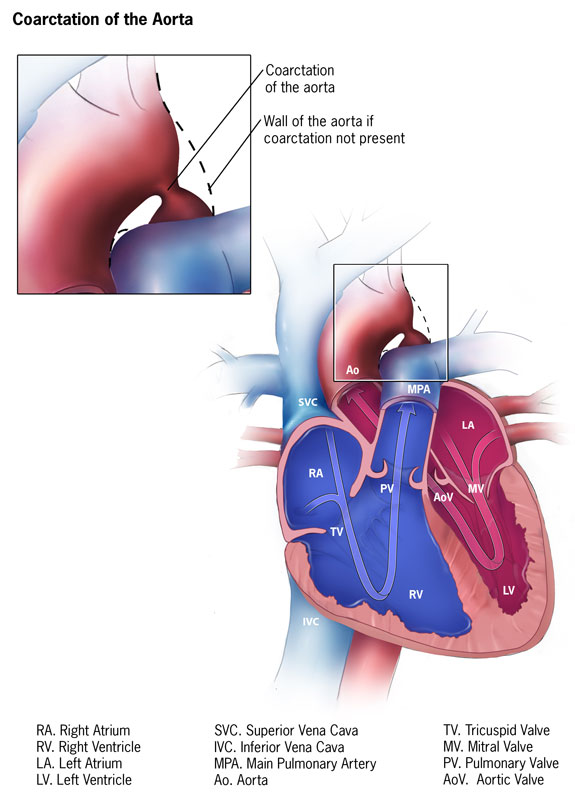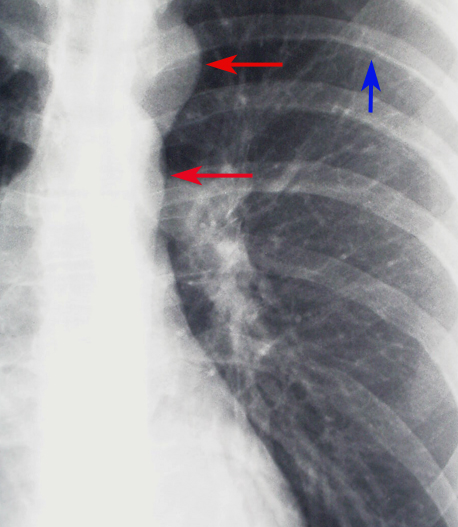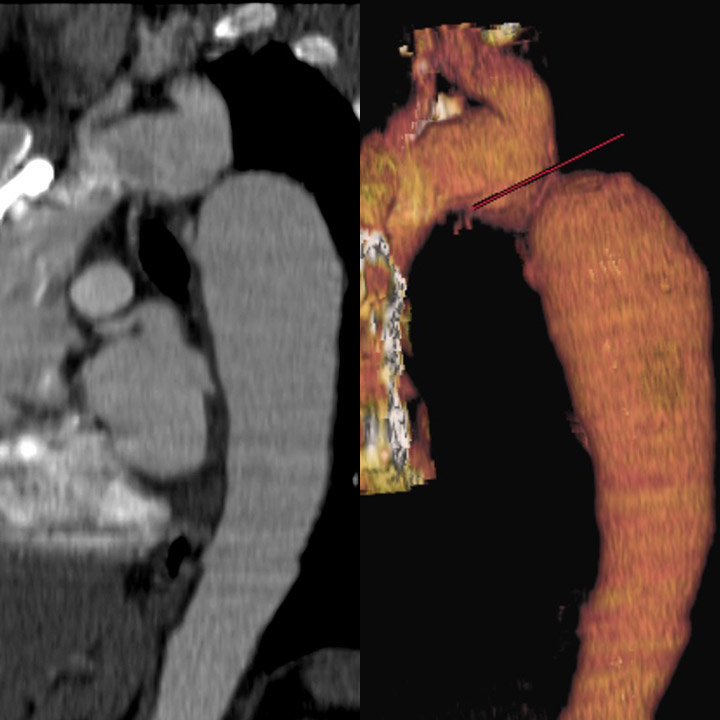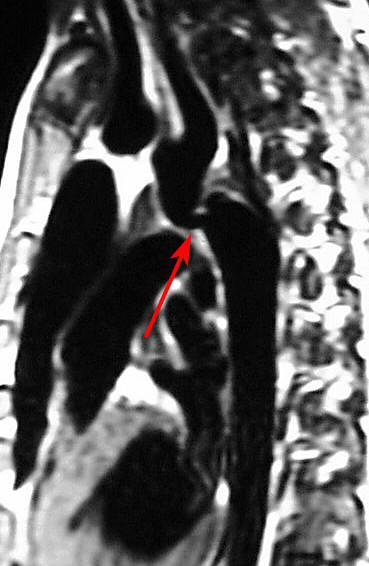[1]
Hoffman JI. The challenge in diagnosing coarctation of the aorta. Cardiovascular journal of Africa. 2018 Jul/Aug 23:29(4):252-255. doi: 10.5830/CVJA-2017-053. Epub 2017 Dec 11
[PubMed PMID: 29293259]
[2]
Boris JR. Primary-care management of patients with coarctation of the aorta. Cardiology in the young. 2016 Dec:26(8):1537-1542. doi: 10.1017/S1047951116001748. Epub
[PubMed PMID: 28148323]
[3]
Beckmann E, Jassar AS. Coarctation repair-redo challenges in the adults: what to do? Journal of visualized surgery. 2018:4():76. doi: 10.21037/jovs.2018.04.07. Epub 2018 Apr 23
[PubMed PMID: 29780722]
[4]
Hanneman K, Newman B, Chan F. Congenital Variants and Anomalies of the Aortic Arch. Radiographics : a review publication of the Radiological Society of North America, Inc. 2017 Jan-Feb:37(1):32-51. doi: 10.1148/rg.2017160033. Epub 2016 Nov 18
[PubMed PMID: 27860551]
[5]
Yetman AT, Starr L, Sanmann J, Wilde M, Murray M, Cramer JW. Clinical and Echocardiographic Prevalence and Detection of Congenital and Acquired Cardiac Abnormalities in Girls and Women with the Turner Syndrome. The American journal of cardiology. 2018 Jul 15:122(2):327-330. doi: 10.1016/j.amjcard.2018.03.357. Epub 2018 Apr 17
[PubMed PMID: 29731120]
[6]
Kaya U, Colak A, Becit N, Ceviz M, Kocak H. Surgical Management of Aortic Coarctation from Infant to Adult. The Eurasian journal of medicine. 2018 Feb:50(1):14-18. doi: 10.5152/eurasianjmed.2017.17273. Epub 2017 Dec 29
[PubMed PMID: 29531485]
[7]
Conti L, Borg Savona S, Spiteri T, Degiovanni J, Borg A, Caruana M. Aortic coarctation - never too late to diagnose, never too late to treat. Images in paediatric cardiology. 2017 Jul-Sep:19(3):1-11
[PubMed PMID: 29731785]
[8]
Wu Y, Jin X, Kuang H, Lv T, Li Y, Zhou Y, Wu C. Is balloon angioplasty superior to surgery in the treatment of paediatric native coarctation of the aorta: a systematic review and meta-analysis. Interactive cardiovascular and thoracic surgery. 2019 Feb 1:28(2):291-300. doi: 10.1093/icvts/ivy224. Epub
[PubMed PMID: 30060099]
Level 1 (high-level) evidence
[9]
Brzezinska-Rajszys G. Stents in treatment of aortic coarctation and recoarctation in small children. International journal of cardiology. 2018 Jul 15:263():40-41. doi: 10.1016/j.ijcard.2018.03.141. Epub
[PubMed PMID: 29754920]
[10]
Mühler EG, Franke A, Lepper W, Grabitz RG, Herrmann G, Klues HG, Messmer BJ, Hanrath P, von Bernuth G. [The management of adolescents and adults with congenital heart defects: 3 years experiences with interdisciplinary consultation]. Zeitschrift fur Kardiologie. 1995 Jul:84(7):532-41
[PubMed PMID: 7676723]
[11]
Rajbanshi BG, Joshi D, Pradhan S, Gautam NC, Timala R, Shakya U, Sharma A, Biswakarma G, Sharma J. Primary surgical repair of coarctation of the aorta in adolescents and adults: intermediate results and consequences of hypertension. European journal of cardio-thoracic surgery : official journal of the European Association for Cardio-thoracic Surgery. 2019 Feb 1:55(2):323-330. doi: 10.1093/ejcts/ezy228. Epub
[PubMed PMID: 29933438]
[12]
Gurvitz M, Burns KM, Brindis R, Broberg CS, Daniels CJ, Fuller SM, Honein MA, Khairy P, Kuehl KS, Landzberg MJ, Mahle WT, Mann DL, Marelli A, Newburger JW, Pearson GD, Starling RC, Tringali GR, Valente AM, Wu JC, Califf RM. Emerging Research Directions in Adult Congenital Heart Disease: A Report From an NHLBI/ACHA Working Group. Journal of the American College of Cardiology. 2016 Apr 26:67(16):1956-64. doi: 10.1016/j.jacc.2016.01.062. Epub
[PubMed PMID: 27102511]
[13]
Ramnarine I. Role of surgery in the management of the adult patient with coarctation of the aorta. Postgraduate medical journal. 2005 Apr:81(954):243-7
[PubMed PMID: 15811888]
[14]
Lala S, Scali ST, Feezor RJ, Chandrekashar S, Giles KA, Fatima J, Berceli SA, Back MR, Huber TS, Beaver TM, Beck AW. Outcomes of thoracic endovascular aortic repair in adult coarctation patients. Journal of vascular surgery. 2018 Feb:67(2):369-381.e2. doi: 10.1016/j.jvs.2017.06.103. Epub 2017 Sep 22
[PubMed PMID: 28947226]




